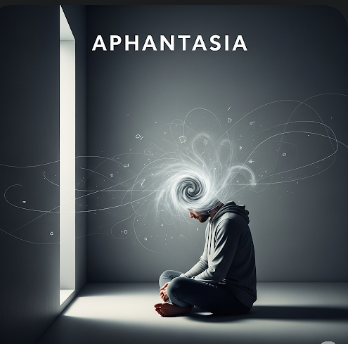Overview
Aphantasia is a rare cognitive condition in which an individual is unable to visualize images in their mind’s eye. People with aphantasia do not create mental pictures, even when attempting to imagine familiar objects, faces, or places. The condition can affect creativity, memory recall, and visualization-based tasks, but it does not impair overall intelligence or cognitive function.
In South Korea, neurological and psychological clinics are increasingly recognizing aphantasia and offering specialized assessments, cognitive evaluations, and adaptive strategies to help individuals manage daily life challenges. Awareness of this condition is growing, particularly among educators, psychologists, and cognitive researchers.
Key Facts
Highlights:
➡️ Aphantasia is the inability to voluntarily visualize mental images.
➡️ It is distinct from blindness or memory loss, as individuals can still process information and recognize objects.
➡️ The condition may be congenital (present from birth) or acquired due to brain injury or neurological conditions.
➡️ Aphantasia can impact tasks requiring mental imagery, such as recalling faces, navigating spaces, or creative visualization.
➡️ Individuals often rely on alternative strategies like verbal descriptions, logic, or auditory cues.
What is Aphantasia?
Aphantasia is a cognitive phenomenon characterized by the lack of mental visualization. While most people can create vivid mental images—like imagining a beach or a loved one’s face—individuals with aphantasia cannot “see” these images in their mind.
Types of aphantasia include:
- Congenital Aphantasia: Present from birth, often unnoticed until tasks requiring visualization arise.
- Acquired Aphantasia: Resulting from trauma, stroke, or other neurological events affecting brain regions linked to visual imagination.
Despite the lack of mental imagery, individuals with aphantasia can still think conceptually, recognize objects, and excel in abstract reasoning.
What Symptoms are Related to Aphantasia?
Symptoms and manifestations include:
- Inability to visualize objects, people, or scenes mentally
- Difficulty recalling faces, places, or familiar routes using mental imagery
- Reduced ability to perform visualization-based memory or learning tasks
- Challenges with creative tasks like drawing, designing, or imagining hypothetical scenarios
- Reliance on verbal, auditory, or logical strategies for memory and problem-solving
- Normal functioning in other cognitive areas such as reasoning, language, and calculation
What Causes / Possible Causes of Aphantasia?
Highlights:
➡️ Congenital Origin: Some individuals are born with a naturally limited ability to form mental images.
➡️ Neurological Causes: Brain injury, stroke, or trauma affecting the visual cortex or related neural pathways.
➡️ Genetic Factors: Research suggests a possible hereditary component, though studies are ongoing.
➡️ Psychological Factors: Rarely, extreme stress or trauma may impact mental visualization temporarily.
➡️ Functional Brain Differences: Neuroimaging studies indicate altered connectivity between the visual cortex and frontal brain regions involved in imagination.
When Should I See My Doctor?
Highlights:
➡️ If the inability to visualize interferes with learning, memory, or work-related tasks.
➡️ If aphantasia appears suddenly after head injury or neurological events.
➡️ For assessment to rule out neurological damage or cognitive disorders.
➡️ If the condition contributes to anxiety, stress, or difficulties in daily functioning.
➡️ To receive guidance on adaptive strategies and cognitive support.
➡️ If there is uncertainty whether difficulties are due to aphantasia or other cognitive impairments.
Care and Treatment
Currently, there is no specific medical treatment for aphantasia. Management focuses on adaptation and cognitive strategies:
Highlights:
➡️ Cognitive Training: Exercises to improve memory and visualization using verbal, logical, or auditory strategies.
➡️ Educational Support: Tailored learning techniques that minimize reliance on mental imagery.
➡️ Occupational Guidance: Strategies for navigating work tasks requiring visualization, such as diagramming or spatial planning.
➡️ Creative Adaptation: Use of external visual aids, drawings, or digital tools for artistic and planning tasks.
➡️ Psychological Support: Counseling or therapy for individuals experiencing frustration or anxiety due to visualization difficulties.
➡️ Memory Enhancement: Techniques like verbal repetition, mnemonics, and structured routines to compensate for lack of imagery.
➡️ Self-Awareness: Recognizing personal cognitive strengths and adapting accordingly for daily activities and learning.
Treatment Options in Korea
South Korea offers support and specialized care for individuals with cognitive differences like aphantasia:
Highlights:
➡️ Neurocognitive Assessment: Comprehensive evaluation of memory, visual processing, and mental imagery capacity.
➡️ Cognitive Therapy Programs: Tailored strategies to compensate for limited visualization using verbal, auditory, and logical methods.
➡️ Educational and Occupational Support: Guidance for students and professionals to adapt learning and work tasks.
➡️ Psychological Counseling: Addressing emotional stress, self-esteem, and coping strategies.
➡️ Technology-Assisted Tools: Use of software, apps, and visual aids to enhance planning, creativity, and memory tasks.
➡️ Research Participation: Access to clinical studies investigating cognitive variations and mental imagery.
➡️ Medical Tourism Support: Multilingual services, structured cognitive evaluations, and follow-up care for international patients.













